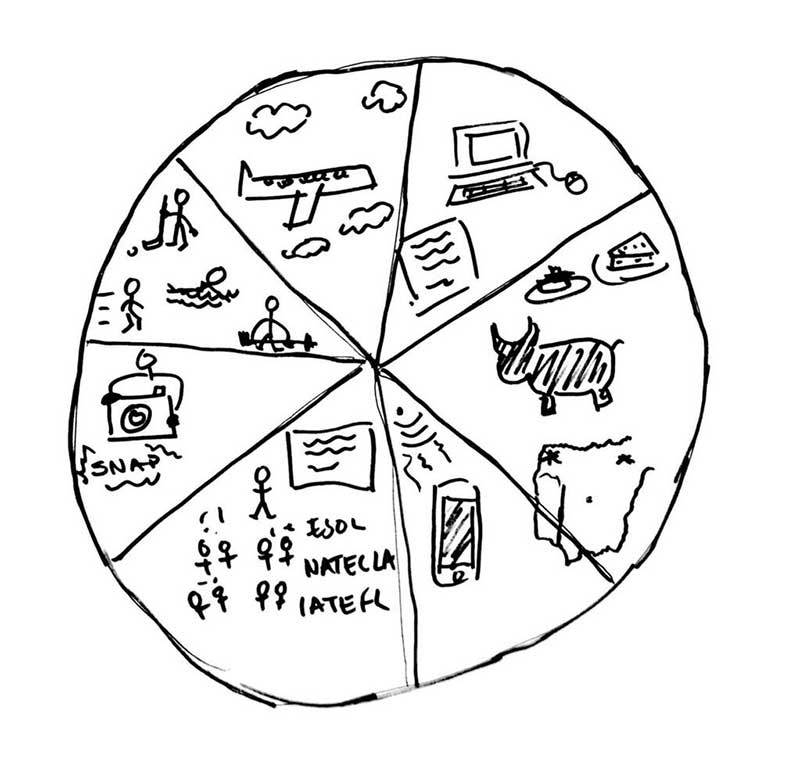
Pizza slices of my life
This description was prompted by an exchange with Aleksandra Grabowska on Facebook and is an extension of what I wrote following an English For Action workshop at the Rewrite Creative ESOL day conference last year.
This was an activity presented by EFA’s Dermot Bryers and Cait Crosse. This half-remembered description may not match entirely their version of the activity.
Identity pizza
Equipment required: a blank sheet of paper for each person (at least A4 size); pens and pencils for drawing and colouring.
- Make sure that each person has a piece of paper and something to draw with. Ask each person to draw the outline of a pizza (a big circle) on their piece of paper. It does not matter if it is not a perfect circle – pizzas are not perfectly circular. The outlines should take up as much of the paper as possible.
- Ask each person to think of one thing that defines them as a person, an experience they have had or a skill they possess. They should try to come up with between five and seven things.
- Ask them to divide their pizza into slices and to draw a picture for each of the things they thought of. Each picture should fill one slice.
- They should come up with something like this. So should you – because the teacher or facilitator of the group is as involved in this activity as the learners.

- This image can then be used as the basis for speaking activities and discussion. Here are some phrases that people may use, that you might teach or provide at some point during or after the activity.
What is that picture?
Why did you draw a picture of a bull?
What is the significance of the phone?
Why is the camera important?
Is that a plane? I guess you must like to travel.
That looks like a classroom. Are you a teacher?
- Obviously other language may come up and can be dealt with as it emerges.
- This could then lead on to other activities. These might be as simple as asking people to do an action based on what they drew and talked about. For example, ‘Everyone who drew a picture about a country stand up’ or ‘If you drew a computer, put your hand on your nose’. Adapt the actions and instructions depending on people’s level of language.
- This could also lead on to discussions, for example, getting everyone who drew a picture about their jobs together to discuss the differences in their working lives; everyone who drew a picture about a hobby gets together to decide who does the most interesting things in their free time; and so on.
What’s good about this is that it is an open-ended activity. There are no expected language exponents, and there are no right or wrong answers. It’s based on the lives and interests of the people in the room, so it doesn’t require people to spend unnecessary mental power trying to talk about something they have little or no experience of or interest in. It creates a natural information gap – no one knows what the other person is going to draw, so there will always be something to talk about.
I think it’s a great activity, and if I were teaching a class at the moment I would do it tomorrow. Would you?
You can find out more about EFA’s work on their website.